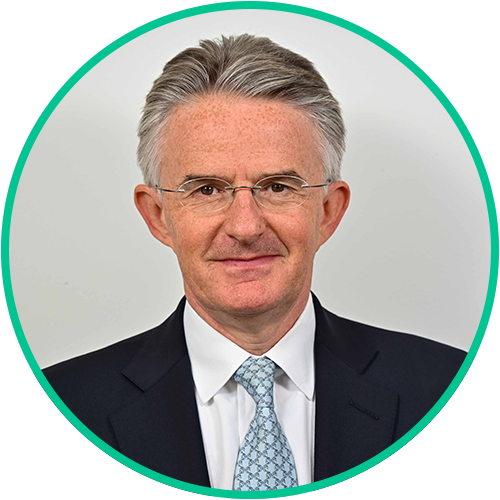InfraBank in Focus: Where and how we invest
Infra Bank in Focus
Where and how we invest
15 September 2023
By John Flint, CEO of the UK Infrastructure Bank

As we prepare to publish an update to our strategy, in this blog our CEO John Flint reflects on the Bank's progress to date and explains why, with foundations now firmly in place, the Bank is well placed to go from strength to strength.
I’ve been out and about on a lot of public platforms lately. I enjoy these occasions. I get to debate issues with bright, informed and committed people. And I nearly always learn something.
As the Bank matures, I often find myself explaining at these events how we are judging the pace and breadth of our investments and our approach in comparison to other development banks.
We are always mindful that our twin objectives – helping tackle climate change and driving up regional and local economic growth – are critical and therefore, by extension, time critical. We want to do all we can to address these issues as quickly and effectively as possible.
Just over two years into our life, and on the eve of publication of an update on our strategy, it seems a good time to do a quick stocktake on some themes I commonly encounter at public events.
The basic facts, as I see them, are simple. We have £22bn to deploy across the capital structure in partnership with the private and public sectors in pursuit of our twin objectives. That’s a big responsibility and a lot of taxpayers’ money. We have to invest at an appropriate pace and with appropriate ambition, but also wisely and transparently.
So, how do we ensure this? Conversely, that’s complex, but I would flag three key elements.
First, skills and expertise. Recruitment has been a priority for us. The Bank began from a standing start just over two years ago – literally six people on secondment – and since then we have frontloaded building up our banking expertise across our entire product offer: debt, guarantees and equity. The result is that we expect to deploy more than £2bn this year, and the pace will then quicken further. We now have the skills to operate across the entire capital structure and I am unapologetic that this expertise has taken time to build. One example is direct equity investments – with the right team now in place, we recently made our first such investment of £24 million to support Cornish Lithium in the development of the UK’s critical minerals supply chain.
People may say we could have gone faster and compare our rate of investment to established development banks who are already running at full capacity. Such comparisons can be pretty meaningless. By way of example, the German development bank KfW is 75 years old, has more than 7,000 staff and total assets in excess of €500bn on its balance sheet. We will be around 280 staff, or less, at steady state, and have the potential to hold £22bn on our balance sheet.
The second element is our mandate. Our shareholder, HM Treasury, has provided us with a clear and tightly defined mandate that sets out the areas in which we invest and includes checks to nullify any potential negative impacts and ensure we are truly additional. To bring this to life, we have invested across most of our core sectors, while strictly adhering to our investment principles, and have supported projects ranging from a rewilding project in the Scottish Highlands and Islands, to an interconnector with Germany.
A common comparison is made with the European Investment Bank (EIB). It is true that we were designed to replace some of the activities of the EIB post-Brexit. But we provide more targeted support across specific sectors than the EIB, via that more tightly defined mandate, and are more aligned with the UK Government’s objectives, with a risk appetite designed to move markets. And importantly, we have a greater focus on additionality to ensure we don’t crowd out private sector investment. That’s something we are hardwired to avoid.
The third element is pitching our offer at the right level and ensuring we are easy to do business with. This is key to our ability to help others solve the financing problems that are barriers to reaching net zero and levelling up. As an example, our local authority function can lend at preferential rates compared to other lenders, including the Public Works Loan Board. And importantly, we can be more flexible, taking account of the unpredictable nature of large infrastructure projects, structuring cash flows to enable drawdowns when they are actually needed, thereby helping avoid overborrowing and overpaying.
So, while not being complacent, I think we are exactly where we should be at this stage in our development. We have deployed about £2bn of our capital, crowding in £9.6bn and creating and supporting 5,700 jobs, as well as advising local authorities in all parts of UK, and working collaboratively with Government to support its grant programmes, such as the Green Heat Network Fund. And we have done all of this while adhering to that clearly defined mandate.
We also have a steadily building pipeline, with an increasingly diversified book and, significantly, people are increasingly coming to us to ask for our help in solving their financing problems, while we also continue to seek out opportunities to invest. We want to hear from anyone who thinks we have the potential to help in a relevant sector.
I look forward to setting out all of this alongside my colleagues on multiple public platforms in the coming months. And I am confident we will continue to learn something ourselves along the way.